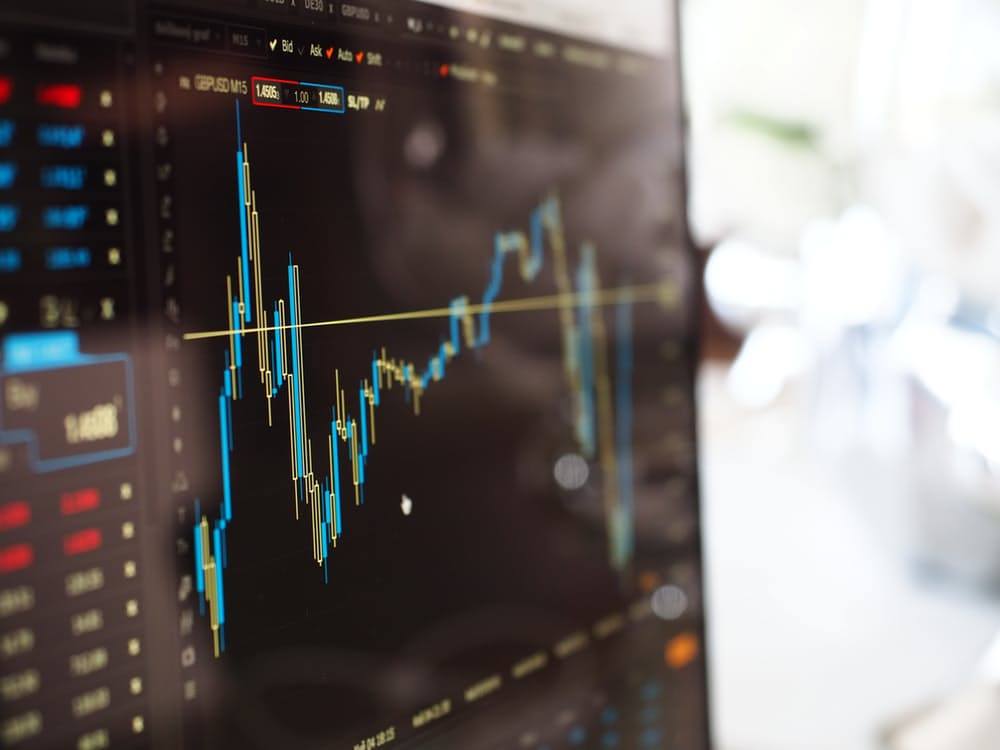Featured
These are the 3 biggest lies about market volatility
Instead of running from it, you should embrace volatility… and learn to trade its booms and busts like a pro.

Volatility gets a bad rap.
The media typically portrays it as the financial world’s evil villain personified, saying things like…
“Volatility reared its ugly head on Monday.”
Or…
“Volatility is striking fear into the heart of the masses.”
You can almost picture the CGI monster Hollywood would create – the “Volatility Viper” – with its ten snakeheads and blood-dripping fangs, snapping at Wall Street suits as they run for their lives.
And after reading enough of this fear-laden commentary on volatility, it’s easy to understand why ordinary investors have become conditioned to fear and avoid it – at any cost!
We’re told to worry about volatility when it’s too low since that suggests investors are being too complacent – aka, idiots with their heads in the sand.
We’re also supposed to worry when it’s shooting higher, almost as if volatility itself is the cause of the stock market’s drop that day – (Psst: it’s never the cause!)
And even though investors have been clamoring for smooth-sailing investments for years now – as evidenced by the huge amounts of money flowing into “low volatility” stock ETFs – I’m going on record today, to say:
You should put your money to work in high-volatility investments if you want to grow your nest egg into a small fortune.
Although, before I explain why, and how, I want to tackle the three biggest lies you’ve been told about volatility. They’re lies that, if you believe them, are already costing you a fortune.
1. The biggest lie about volatility is… Volatility is “bad”
As I told the beta-testers of my new 10x Profits service back in December: Volatility is neither “good,” nor “bad,” – it just “is.”
It’s a simple numerical measure that describes to what magnitude a stock or ETF typically moves – either up or down.
But for some reason, you never hear the financial media talk about upside volatility.
Two weeks ago, when shares of grocery retailer Kroger Co. (NYSE: KR) fell 26% in two days… you read about volatility “rearing its ugly head.”
But when Whole Foods Market (NYSE: WFM) jumped 20% higher over the same two days… I bet you couldn’t find a single headline that read: Volatility Praised for Boosting Whole Foods 20%.
My point is… volatility gets all the blame when it strikes on the downside and none of the credit for above-average sized moves on the upside.
And that’s why investors have been conditioned to fear “high volatility” investments – even though, assuming the downside volatility can be managed, upside volatility can make the difference between earning 8% a year… and earning 65% a year!
Bottom line: you need some high-volatility investments in your portfolio if you want to earn big profits.
Now, let’s turn to the biggest lies told about the most-heavily traded “volatility ETF” in the world… the infamous VXX.
2. VXX “hedges” the risk in stocks
The iPath S&P 500 VIX Short-Term ETN (NYSE: VXX) hit the market in 2009 with a simple and convincing pitch: buy it to “hedge” the risk in your stock portfolio.
Simply put: VXX is designed, in general, to go higher when volatility goes higher. And since volatility tends to rise when the stock market falls… it was billed as an easy way for everyday investors to buy “portfolio insurance.”
Well, that hasn’t actually worked out so well.
Take a look at this chart, which shows the percentage change of VXX since its January 2009 inception:

(Source)
That’s right… $10,000 invested in VXX, in 2009, is worth just $5 today!
Not only has VXX not worked well as a “hedge,” it’s been an incredibly powerful wealth destroyer… completely duping unsuspecting investors who thought they were being prudent by buying and holding it.
Now, it didn’t take long for people to figure out VXX was problematic for ordinary investors. It went into freefall almost immediately – losing 66% in 2009 and 72% in 2010.
And that dismal performance led to another big lie about volatility and this newly-introduced volatility ETF…
3. VXX is worthless… Don’t touch it with a 10-foot pole
Like volatility itself, VXX, and its counterpart “inverse volatility” ETF, XIV, are not inherently “good” or “bad.”
It all depends on how, and when, you use them.
You see, while shares of VXX have absolutely cratered alongside rising stock prices… shares of XIV are up nearly 800% since their November 2010 inception.
So while the S&P 500 is up nicely since then, gaining 105%… this inverse volatility ETF (XIV) has gained seven times more… enough to turn a $10,000 stake into almost $90,000!
Now, even though both XIV and VXX have produced some truly amazing profits – if you had bought the former, andsold shortt the latter – I’ll be the first to echo the warnings of many opponents of these volatility products.
First, these are NOT “buy-and-hold” investments.
And second, unless you’re a professional, you should NOT try to “go it alone” with them.
I’ve been studying and trading financial markets for well over a decade now. And I’m convinced that volatility products are truly the next best thing since sliced bread… but only if you know how, and when, to use them.
In fact, that’s pretty much been my sole focus over the past two years… researching what I call volatility “booms and busts,” and how to trade them.
Since last December, a small group of beta-testers have been test-driving my model, which simply tells us:
•When to go long volatility (with a purchase of VXX), and
•When to go short volatility (with a purchase of XIV).
It’s really that simple.
My research tells us if we’re in one of the market’s three “safe” environments… environments that have historically led to annualized returns as high as 151%, from XIV (our “inverse” volatility ETF).
And it warns us when there’s “trouble ahead” – when volatility is poised to rocket higher. When that happens, we make a simple switch into VXX, which returns 51% annualized – for short periods of time – when my model flashes its warning signal.
Essentially, by switching between XIV (when it’s “safe”) and VXX (when it’s not), we’re able to play both sides of volatility booms and busts. We’re able to get most of the “good” from these powerful volatility products, while also avoiding most of the “bad” in them.
Remember, even if the financial media would rather keep you scared and timid… volatility isn’t “bad,” and attempting to avoid it at any cost is, in fact, probably costing you a small fortune!
Instead of running from it, you should embrace volatility… and learn to trade its booms and busts like a pro.
—
DISCLAIMER: This article expresses my own ideas and opinions. Any information I have shared are from sources that I believe to be reliable and accurate. I did not receive any financial compensation in writing this post, nor do I own any shares in any company I’ve mentioned. I encourage any reader to do their own diligent research first before making any investment decisions.

-

 Crowdfunding1 week ago
Crowdfunding1 week agoPMG Empowers Italian SMEs with Performance Marketing and Investor-Friendly Crowdfunding
-

 Markets5 days ago
Markets5 days agoMarkets Wobble After Highs as Tariffs Rise and Commodities Soar
-

 Markets2 weeks ago
Markets2 weeks agoThe Big Beautiful Bill: Market Highs Mask Debt and Divergence
-

 Africa2 days ago
Africa2 days agoORA Technologies Secures $7.5M from Local Investors, Boosting Morocco’s Tech Independence


























You must be logged in to post a comment Login